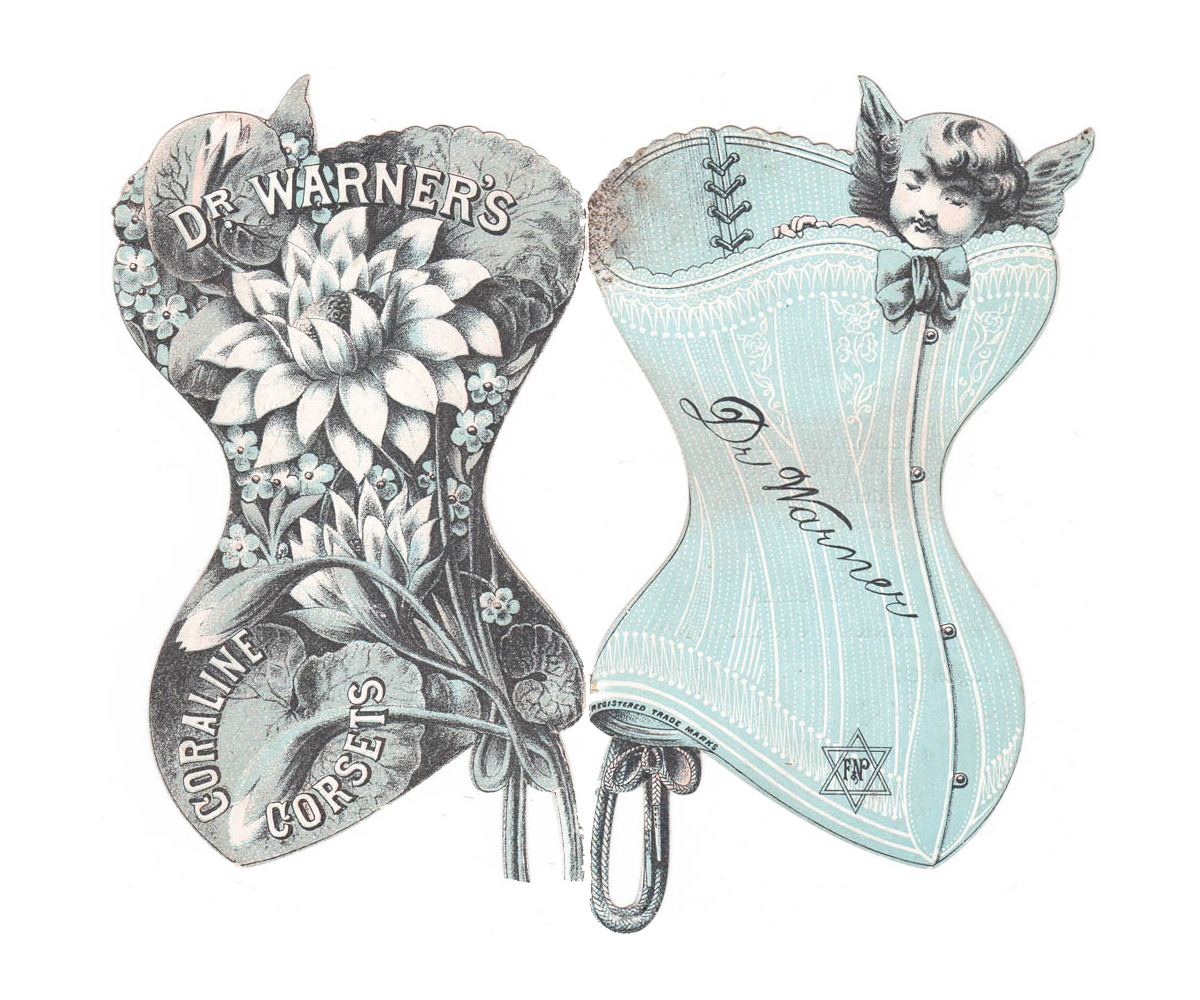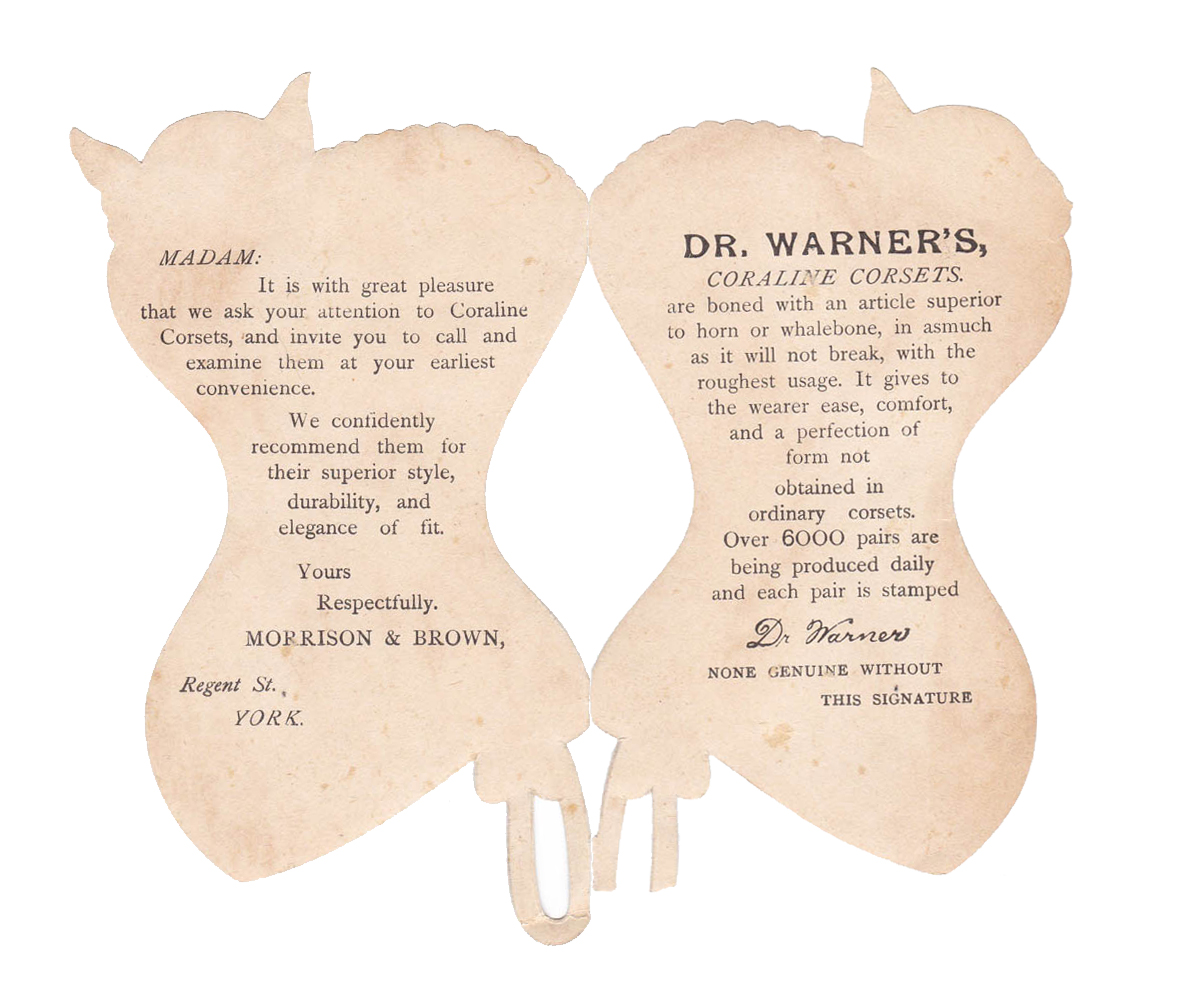Date: c. 1890s
Origin: Great Britain
Brand: Warner
A trade card produced to advertise the Warner range of corsets, as stocked by retailer Morrison & Brown, based in Great Britain. The card has a centre fold, and is die cut to follow the curves of the illustrated corset. These advertising materials became highly collectible, with many corset brands releasing variations of trade cards.
The front exterior of the corset is illustrated with one of the Warner brand corset designs, accompanied by a sleeping cherub inside the garment. The rear of the card is illustrated with a lush floral design. On the interior of the card is an invitation to visit the retailer Morrison & Brown and a recommendation of Warner products, and information on the signature Coraline material that was used to structure the brand’s corsets. Coraline was manufactured from the straight, stiff fibers of the Mexican ixtle plant, bound together by two strands of thread wrapped in opposite directions. It was a substitute for baleen, which was becoming increasingly scarce due to overhunting of baleen whales.
In the late nineteenth century, New York physician Dr Lucien Warner gave up his practice to begin a new career lecturing on women’s health issues, including the effects of the corset. In 1873, he designed a corset that provided the desired fashionable shape along with increased flexibility. The following year, Lucien Warner and his brother founded Warner Brothers Corset Manufacturers. After buying Mary Phelps Jacob’s brassiere patent in 1915, Warner’s went on to introduce lettered cup sizing in the 1930s and released its first line of extremely successful ‘Merry Widow’ foundation garments in 1952.
From the collection of Karolina Laskowska




